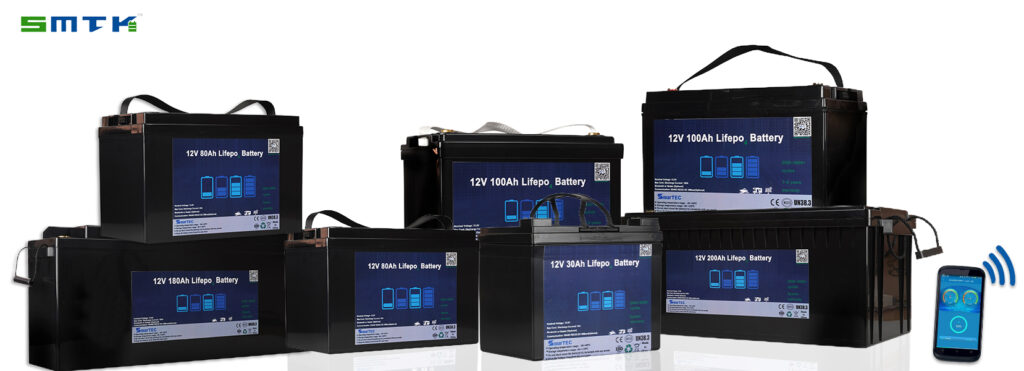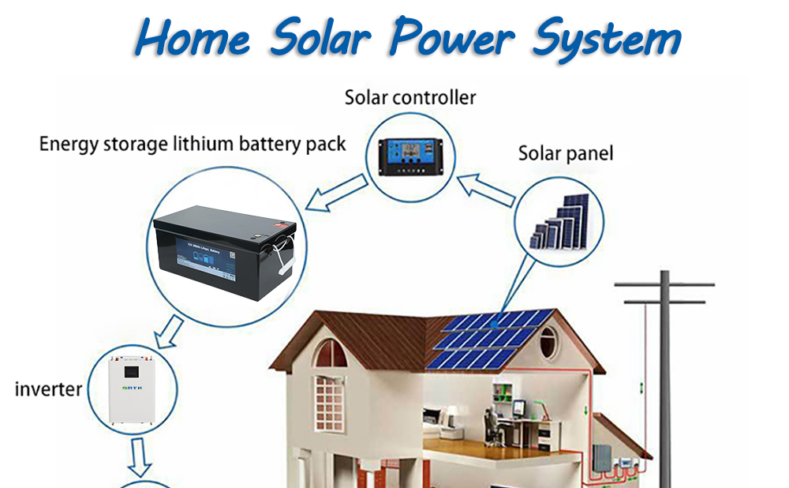In recent years, solar energy has emerged as a widely embraced and sustainable power source. To harness solar energy effectively, selecting the appropriate battery for storing surplus energy is of paramount importance. This comprehensive guide delves into the various types of batteries suitable for solar panels and the key factors that determine the optimal choice to meet your specific energy storage needs.
Lithium-ion batteries used for solar power applications are typically chosen based on specific requirements such as energy storage capacity, cycle life, depth of discharge, and cost-effectiveness. Among the most popular choices in the market for solar power applications are lithium iron phosphate (LiFePO4 or LFP) batteries. Several factors make LFP batteries well-suited for solar energy storage:

Safety: Renowned for their outstanding safety record, lithium iron phosphate (LiFePO4) batteries are more stable and less prone to thermal runaway, making them a reliable choice for residential solar power systems. The SmarTEC LiFePO4 battery, equipped with a built-in 100A BMS (Battery Management System) and Low-temp Cut-off protection, ensures peak battery performance even under the most challenging conditions. Moreover, the SmarTEC Lithium battery boasts an IP65 waterproof rating, offering effective defense against dust infiltration and low-pressure spray from all directions. Its sturdy casing is constructed from resilient materials, and the internal structure is solid and durable, capable of withstanding the rigors of outdoor adventures.
High Efficiency: LiFePO4 batteries have good charge and discharge efficiency, meaning less energy is lost during the charging and discharging process. This makes them an efficient option for solar power applications.
Wide Temperature Operating Spectrum: SmarTEC lithium batteries offer peace of mind through their extensive temperature tolerance, ensuring reliable performance across a wide range of temperatures. With an operational range spanning from -4°F to 140°F, this battery is versatile enough to thrive in a variety of environments, be it scorching summer or frosty winter. Ensure year-round power peace of mind with a supply of SmarTEC batteries.
Zero Maintenance: Crafted from lithium iron phosphate, SmarTEC batteries are renowned for their exceptional safety characteristics and minimal maintenance demands. Unlike many other lithium batteries, SmarTEC batteries exhibit lower susceptibility to thermal runaway, and they are free from liquid electrolytes and harmful substances, contributing to their eco-friendliness.

Solar Panel Generation: Solar panels, also known as photovoltaic (PV) panels, capture sunlight and convert it into direct current (DC) electrical energy. This DC electricity is generated as sunlight strikes the solar cells, freeing electrons and creating an electric current within the cells.
Charge Controller: The DC electricity generated by the solar panels is not always at a consistent voltage and may vary with sunlight conditions. To ensure safe and efficient battery charging, a charge controller is employed. Regulating the voltage and current from the solar panels, the charge controller provides the appropriate charging voltage to the LiFePO4 batteries. It prevents overcharging, potential battery damage, and may include features like temperature compensation for an optimized charging process.
Battery Storage: LiFePO4 batteries store the excess electricity generated by the solar panels during the day. Connected to the charge controller, these batteries benefit from efficient energy storage with minimal loss as they are charged.
Inverter: When electrical energy in the form of alternating current (AC) is required, an inverter comes into play. It converts the DC electricity stored in the LiFePO4 batteries into AC electricity. This AC electricity can then power appliances, lighting, and other electrical devices in your home or business.
Load and Grid Connection: Directed to power electrical loads in the building, AC electricity can illuminate lights, operate appliances, and energize various devices. In cases where the solar system generates surplus electricity, if the system is grid-connected, the excess can be fed back into the grid. In such systems, excess electricity may be credited or sold back to the utility company.
Power Monitoring and Control: Our solar systems incorporate monitoring and control systems, enabling users to track their system’s performance and adjust settings as needed. This feature helps optimize energy production and ensures efficient charging and discharging of the LiFePO4 batteries.

